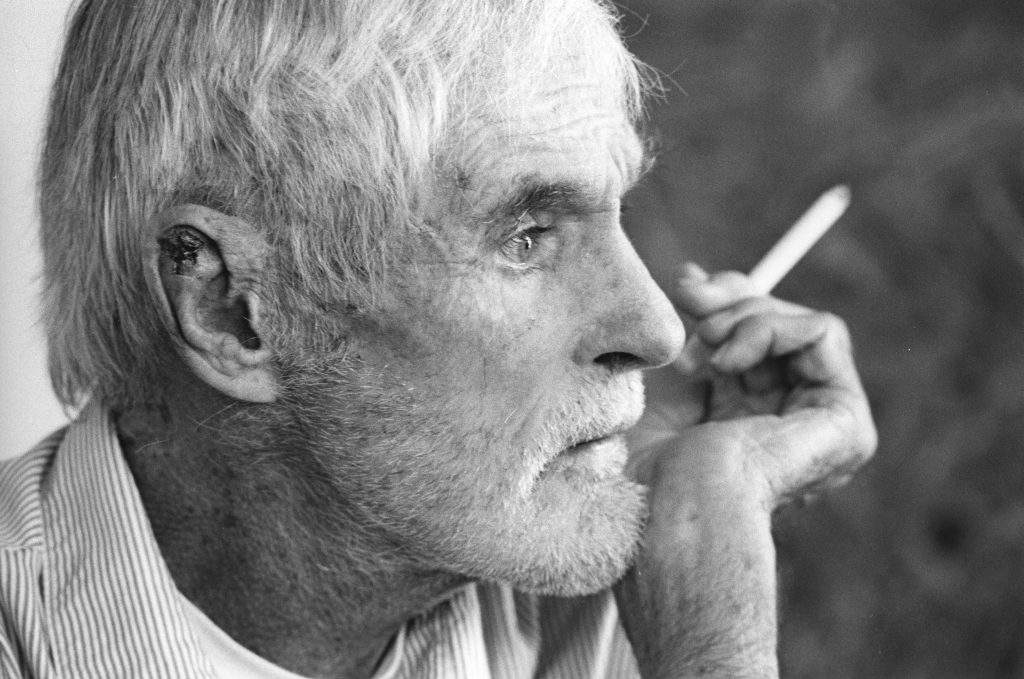
in this article
- Introduction
- What is Set and Setting?
- The Origins of Set and Setting
- Development of the Theory of Set and Setting
- Set and Setting and Other Drugs
- Set & Setting Best Practices
- Conclusion
Are you 18 or older?
Please confirm that your are 18 years of age or older.
You are not allowed to access the page.

Disclaimer: The views and opinions expressed in this article are those of the authors and do not necessarily reflect the official policy or position of Chemical Collective or any associated parties.
Set and setting is a core concept in the usage and study of psychedelics. The effects of psychedelic substances are not only related to the amount imbibed but also to the environment or context in which that substance is consumed. It is a term which refers to the impact of psychological, social, and cultural constraints which shape our responses to psychedelic drugs. It is considered fundamental in research into psychedelics and has also been applied to explain non-dose/chemical-specific factors which impact the effects of other drugs such as cocaine, alcohol, and heroin. The concept of set and setting is crucial to the progression of psychedelic and drug research and creating more effective policies on recreational drug use.
This article will explore to what extent the effects of psychedelics are produced by society and culture and to what extent these effects are purely chemical and predictable. The placebo effect is known to play a significant role in the effects of drugs across different cultures and societies, but why is this?
SET (a shortened form of “mindset”) is the mental state of an individual, thoughts, desires, feelings, general mood, and any preconceptions and expectations about the experience. The current health physically is also a factor, if one is unwell, for example, these sensations may be amplified.
SETTING refers to the physical and social environment in which the experience takes place. If an environment feels safe, familiar, comfortable, and predictable, it is more likely to facilitate a positive experience. If one is in an environment which is uncontrollable or unfamiliar or negative in one way or another this may create anxiety. Psychedelics are known to enhance the mood or emotions of an individual, so a negative environment may promote a negative, potentially even dangerous experience. This may be unrelated to dosage or prior experience of a given chemical and differ completely from previous experiences due to these external factors.
In the 1950s, some people in the medical community began to reconsider how psychotherapy was applied using LSD. Psychiatrists initially experimented solely on themselves and had positive experiences. These experiences commonly took place in their own homes or offices, safe, predictable, known spaces. They were free to come and go and do as they please and of course, understood the likely effects of LSD. This was not true for studies carried out on their patients, regardless of physical or mental health. People often felt anxiety and even terror. Therefore, it was necessary to improve the practices of these experiments to support the well-being of those involved and to get a more accurate picture of how these drugs could be used.

Timothy Leary, the well-known and polarising Harvard psychologist who played a crucial role in introducing psychedelics into the cultural discourse of 1960s America, originally coined the term set and setting, The term was first introduced at the annual meeting of the American Psychological Association on 9 September 1961 and popularised in The Psychedelic Experience: A Manual Based on the Tibetan Book of the Dead which was released in 1964.
Leary and his colleagues claimed that set and setting is the most important factor affecting the psychedelic experience. Although the specific term “set and setting” was introduced by Leary, its origins go much further back. Social and cultural contexts have always been integral to the psychedelic experience throughout the history of drug use. Shamanic and religious rituals which actively control the setting of a particular experience and the corresponding spiritual and religious beliefs of the culture in question affect the mindset of individuals undertaking the experience. Shamans can amplify and control the effects of substances through various techniques such as ritual songs and dances and controlled breathing.
Worldwide interest in psychedelic research is at an all-time high. The newly confirmed potential uses for these substances as agents for healing and change have brought set and setting under increased scrutiny. The use of psychedelics in medicine has been found to be crucially dependent on the wise application of appropriate contextual cues. It is argued that neglecting the context makes the psychedelic experience not only clinically ineffective but also potentially harmful.
Several recent trials have gained positive outcomes with carefully prepared sessions incorporating set and setting. These sessions have provided active psychological support and environmental controls, have been shown to alleviate some mood disorders’ psychological distress and have shown potential in addiction recovery. It is believed that the apparent success of these trials is due to extensive psychological preparation and manipulation of the therapeutic environment. This pre-preparation involves multiple visits with, typically, two ‘sitters’ or ‘guides’, mental health professionals tasked with preparing the patient for the experience, supporting them during it, and most importantly, integrating the content and perceived meaning of the experience after it has concluded. It has been shown that brightly lit spaces produced more bad trips (56.6%), but dark spaces are also inadequate (31.9%). So, environmental controls include elements such as low lighting, carefully selected music playlists, aesthetically pleasing décor and implicit as well as explicit priming.

Another development in the understanding of set and setting is what is described as a cultural feedback loop. This process profoundly affects the mindset of all individuals involved – both mental health professionals and the patients themselves. For example, during the furore of the 1960s/70s when psychedelics became demonised and the drugs became associated with psychotic episodes, the counterculture movement and opposition to the Vietnam War. This negatively affected the results of the limited research, with more reported bad trips and negative experiments due to the context in which they were carried out. Since the 1990s, there has been a psychedelic renaissance, and public opinion has rapidly shifted away from simplistic, negative interpretations of these experiences. The powerful, positive effects we are now seeing psychedelics can produce are seen as products of this cyclical process.
Public opinion shifts, individuals experience more positive responses to psychedelics, the media disseminates these experiences, altering wider culture, and positive expectations and preconceptions of individuals are perpetuated.
A final, powerful discovery of modern psychedelic research is individuals’ relationship to music. Patient’s response to music has been found to actively impact the quality of their experience, and a positive experience is predictive of long-term therapeutic outcomes. Music has been shown to affect brain chemistry, which is thought to alter the brain’s plasticity in certain circumstances. This can work synergistically with context, facilitating an experience that is conducive to both short-term and long-term benefits.
But what about other drugs? To what extent are their effects altered by the context in which they are consumed? The role of set and setting has not been entirely absent in the study of nonpsychedelic drugs. The impact of cultural factors has been found to alter the effects of not only psychedelics but also the effects of tranquillizers, sedatives, and stimulants.
One drug which has profoundly been shaped by and itself shaped society and culture is alcohol. Social and cultural contexts have been shown to alter the effects of alcohol on individuals. Multiple studies under strictly controlled conditions (double-blind, with placebos) in a wide variety of cultures have illustrated that these effects are predicated on what people think they have drunk than by what they have actually drunk, for example, if you expect alcohol consumption to result in aggression, it likely will.

Set and setting have also been found to affect heroin use and the potential for addiction. During the Vietnam war, heroin use in the military rose dramatically (35% of enlisted men in Vietnam used heroin). It is hypothesised that the boredom and sense of purposelessness contributed to this rise in the abuse of the substance. Attempts to control this abuse through treatment were almost entirely unsuccessful, with a reported 90% recidivism rate during the war. However, when soldiers who used heroin returned home, 88% of these ex-troopers stopped using the drug spontaneously. This suggests that the context in which the drug is being taken is a huge factor and totally contradicts the common preconception of heroin addicts. “Once an addict, always an addict” may not be as accurate as it is often claimed (by organisations such as Narcotics Anonymous, for example). So, what changed? It seems improbable it was a sudden physical transformation but more likely the setting to which they returned.
The famous rat park experiment provides further evidence of the environmental impact of drug use and abuse. Bruce K. Alexander, a Canadian psychologist, conducted this study in 1978. Rats, like humans, are a social species and require social contact to function well. In this study, a group of rats were isolated in a narrow, confined space. These rats showed little hesitation in using morphine which was freely available to them as a cure for boredom, loneliness, or, more broadly, living conditions which are counter to their well-being. Another group of rats were housed with 16 to 20 others. This space was set up like a play park, a mini rat paradise complete with play wheels and balls, food, and space for mating. These rats were much less likely to consume the available morphine to a problematic level. This illustrates the role the environment plays in addiction.
Rat Park, therefore, functions as an allegory for society. The cage symbolises impoverished areas in which most drug abuse takes place. It shows how restrictive, impoverished environments contribute to patterns of drug abuse and how prevalent views of addicts in society need to change.
While it is easy to understand the importance of mindset in your usage of psychedelics, gauging this for yourself is another thing entirely. What is your intent when taking a particular substance? Are you seeking an escape? (Like the rats in the rat park experiment). Seeking to avoid or run away from difficult emotions and experiences can potentially backfire. If it is difficult to ascertain whether this is your goal, you may want to consider working on yourself, preferably with professional assistance, before consuming psychedelics.
If you are struggling with your mental health, prior professional support is essential, we only have to look at the usage of psychedelics in a therapeutic context to see the importance of preparation and integration into a positive experience. Using any drug to self-medicate is a dangerous and slippery slope.
Mood
Psychedelics can magnify emotions, amplifying the mood an individual brings to the experience. If you are feeling positive, psychedelics may enhance this state of mind, leading to a positive experience. However, consuming psychedelics while irritated, stressed, or anxious may increase the likelihood of an unpleasant experience.
Personality
In psychology, there are known to be five personality traits. These can greatly impact an individual’s psychedelic experience. These five primary personality traits are extroversion (sociability), agreeableness (kindness), openness (creativity/intrigue), conscientiousness (thoughtfulness), and neuroticism (sadness/emotional instability).
A study published in the Journal of Psychoactive Drugs found correlations between personality traits and people’s responses to psychedelics. Psychedelics userstend to score higher than average for all of the Big Five traits, which suggests that even the motivation to use these substances at all may be determined by personality. For example, those with high levels of openness were likely to experience“love, inner visions, and contact with non-ordinary beings and transcendent forces” while highly extroverted individuals wereless likely to encounter non-ordinary beings and tend to discover a deeper sense of connection to other people.
Beliefs
The beliefs we hold will also alter our experience of psychedelics. These beliefs may be religious, political, philosophical etc.
For example, pre-existing religious interpretations of reality and consciousness can also lead to differing interpretations of the psychedelic experience. Some cultures believe, for example, that psychedelics put you into contact with spirits and other planes of existence. Whereas someone more grounded in a scientific view of the world might consider them tools for reflection and self-exploration and as a means to improve their mental health.
Setting (Environment)
Where your experience takes place will drastically affect its quality and content. Some common environments where people take psychedelics are in nature, a festival, a concert, or simply at home. Enjoying psychedelics in social situations is common, of course, they don’t always have to be used for deeply introspective purposes. However, it is also possible for this kind of environment to cause over-stimulation or confusion. Your ideal situation for taking psychedelics will be individual to you, and knowledge of this will help promote positive experiences.
Environmental aspects to consider:
Social situation: Who will be present? Family/friends/strangers.
Familiarity: Are you made anxious by new or unfamiliar places, people, or experiences?
Comfort: What do you need to feel comfortable? Food/shelter/space.
Safety: Do you have access to support, both emotional and medical?
IF YOU ARE INEXPERIENCED WITH PSYCHEDELICS, IT IS STRONGLY RECOMMENDED TO CONSUME THEM IN A CALM, SAFE, AND FAMILIAR SPACE WITH PEOPLE YOU KNOW WELL.
Music
The music you listen to during a psychedelic experience can have a powerful impact. This is not a newly discovered phenomenon, and shamans around the world have used sound to guide and manipulate the visionary journeys of their patients for thousands of years.
In clinical trials designed to alleviate depression, individuals listen to a carefully designed playlist while blindfolded. The music is curated to match the stages of a trip (come-up, peak, comedown) and aims to further participants’ comfort and to have a deeper experience.
This suggests that, while enjoyable, just putting on a few random trippy songs may not be conducive to supporting or improving your experience. The Imperial College London and other researchers recommend specific types of music but also restate the importance of your relationship to what you are listening to during the experience. While classical, ambient, or overtone (a sound that has a higher frequency than the fundamental frequency of a certain sound) music are recommended genres to consider, any of your favourite music may be effective at supporting your individual experience.
Here is a playlist originally created for psilocybin-assisted psychotherapy for depression studies at Imperial College London.
Set and setting are incredibly powerful in determining your experience of psychedelics and the wider perceptions of these substances in society. Without careful consideration of these forces, both internal and external, you have little control over the experience you are undertaking. You must, in fact, acknowledge that there are aspects of the psychedelic experience you have no control over whatsoever. You do not fully know yourself and the impact the wider world has on your perception of reality. You do, however, have the means to prepare yourself and your environment to support your experience.
David Blackbourn | Community Blogger at Chemical Collective
David is one of our community bloggers here at Chemical Collective. If you’re interested in joining our blogging team and getting paid to write about subjects you’re passionate about, please reach out to David via email at blog@chemical-collective.com
Welcome to Chemical Collective.
Create an account to earn 200 welcome points.
Already have an account? Sign in
Check out our Community Blog and get involved with the conversation. You will be awarded 50 x ChemCoins for each comment up to a limit of 250 total ChemCoins.
Have you purchased any of our products? Reviews and reports are so important to the community. Share your honest opinion, and we’ll reward you with 50 ChemCoins for each review!
Every time you complete an order with us, you’ll be awarded ChemCoins for each Euro spent.
Welcome to Chemical Collective.
Create an account to earn 200 welcome points.
Already have an account? Sign in
Earn commission every time someone makes a purchase through your link.
When you become an affiliate, you will be allocated a unique link to share with your friends, followers, subscribers, or Aunt Susan.
You can choose to payout the commission earned once per month, or save it up to receive on a rainy day! Commission earned is 5% of the total order value per referral.
Contact us to join the Chemical Collective family and become an affiliate.
share your toughts
Join the Conversation.
Super Anleitung, auch zur Vorbereitung der eigenen Erfahrung!
Awesome read, as always
Wow with a playlist included! That quality!
awesome guide
I wrote my scientific paper for school on the subject of set and setting, and how it influences the experience. Your article confirms my findings! Thank you for sharing it with us 🙂
Lovely article. In my own research, I found out that set and settings play much bigger part in the mood of the trip compared to the amount of psychedelics I take. And the same applies to cannabis.
I will be trying the playlist that you linked in my next research, only listened to the one from Johns Hopkins.
this is a great guide